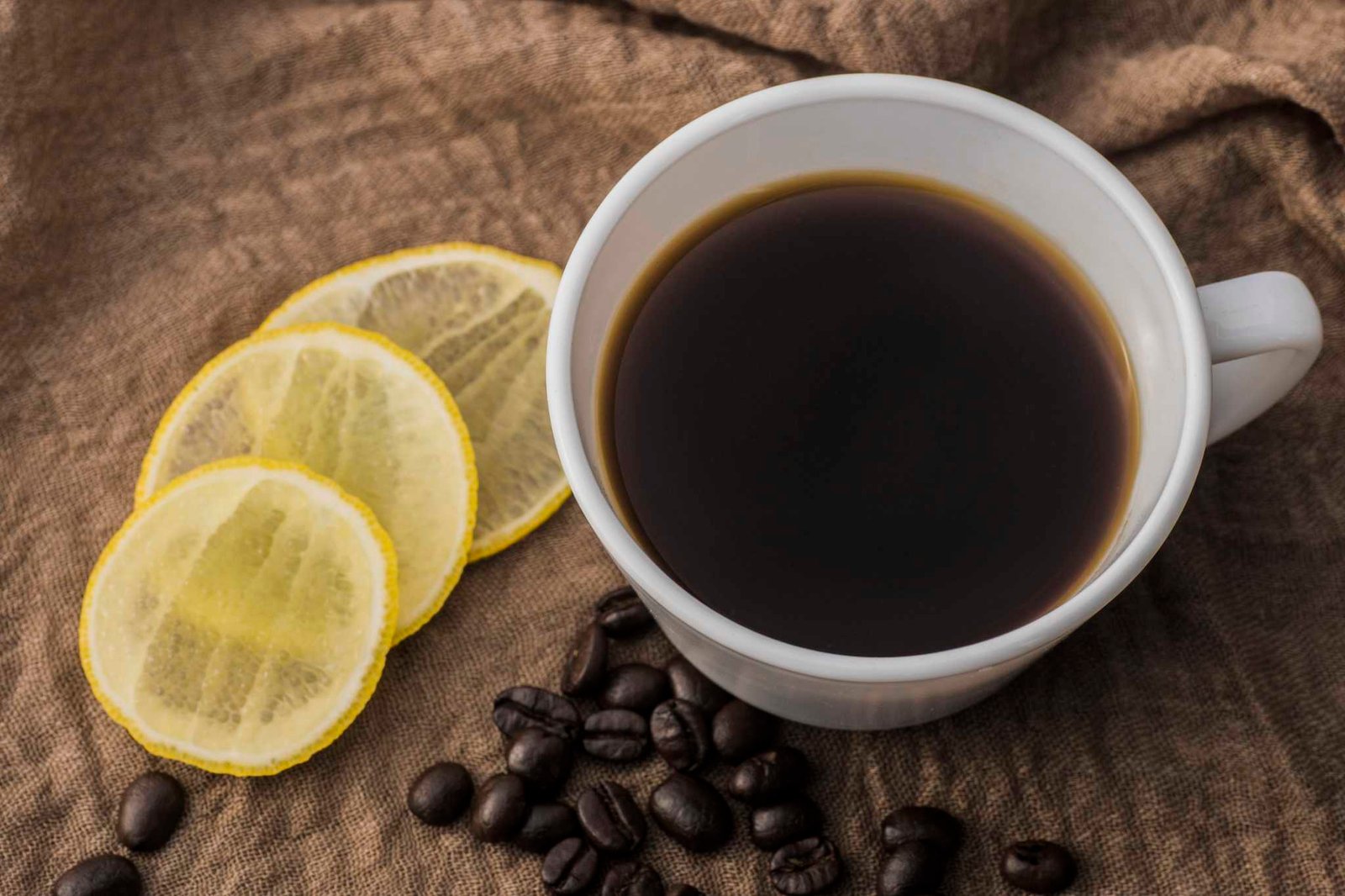10 viral TikTok food and nutrition trends to avoid – Houston Chronicle
Lemon coffee? This Tik Tok trend won’t bring you nutritional benefits. Trust us.
Don’t trust every trend you see on Tik Tok.
When it comes to food, TikTok videos can introduce consumers to kitchen hacks or interesting recipes to try, and even be educational. While some viral nutrition trends and “challenges” may be harmless, some promote severe restriction, disordered eating, nutrition misinformation or have the potential to waste your hard-earned money. Let’s explore 10 TikTok nutrition trends that aren’t worth the hype.
Liquid chlorophyll: Chlorophyll is a green pigment that plants use to make food. Supplemental chlorophyll can be sourced from plants that undergo photosynthesis, like green leafy vegetables, wheatgrass, algae, alfalfa and green tea. It can also be made synthetically. Many wellness influencers have shared videos of themselves dropping liquid chlorophyll into water to help stimulate the immune system, promote “natural” detoxification in the bloodstream, cleanse the intestines and prevent chronic disease. But research on the potential health benefits of liquid chlorophyll is inconclusive and does not support such claims. In fact, consuming such a concentrated amount could cause stomach upset, dermatitis and is especially not recommended for women who are pregnant or breastfeeding. You’re better off allowing your body’s detoxification organs — your kidneys, liver and immune system — to do their thing. Obtain chlorophyll’s benefits from whole, plant-based foods rather than droplets in your water.
MORE FUEL UP: 12 healthy New Year’s Resolutions that do not involve dieting
“What I Eat in a Day” videos: These videos have crossed the line from trendy to instead become a dangerous hashtag influencers use to document everything they eat and drink in a day. Usually, this showcases a calorie intake that is inadequate to support the health and physiological functions of most humans. The videos have evolved to become “What I Eat in a Day in a Calorie Deficit,” in which influencers further decrease an already low calorie intake in an effort to teach consumers how to lose weight. Not only does this encourage disordered eating, it also encourages consumers to play the comparison game and sends the message that if you want to look like an influencer or celebrity, you need to eat like them, too. Such messaging is incredibly damaging, especially to adolescents, who make up a large portion of TikTok users. It’s no coincidence that their engagement has increased significantly throughout the pandemic, along with the incidence of eating disorders. It’s important that consumers understand that each individual body is unique and has its own nutrition needs.
Powdered greens: Powdered greens are a popular dietary supplement made from a blend of green vegetables, other plants, probiotics, sweeteners, extracts or added fiber. Many TikTokers add powdered greens to water, smoothies or even scrambled eggs. Marketed as an easy way to consume an extra serving of vegetables, many supplement companies claim powdered greens can boost energy, immunity and detoxification, as well as help you obtain more vitamins and minerals. There is very little research on the health benefits of powdered greens, and the studies that exist are funded in some part by the manufacturers of the powder supplement being studied. During the manufacturing process, the natural fibers inherent to the green vegetables are removed, leaving the powder supplement very low in fiber. After the manufacturing process, the fiber is then added back. Why take away natural fiber just to add it back in a less natural form? Additionally, one serving of powdered greens tends to be low in calories. When we restrict calories, we actually make it harder for our body’s natural detox systems (hello, liver and kidneys) to do their jobs and filter out waste, which is the opposite effect that most green powder products claim. To put the icing on the cake, a study conducted through Consumer Labs demonstrated that out of 13 “green, whole food” products analyzed, four exceeded limits for lead, contained contaminants and potentially toxic amounts of vitamins and minerals.
“Nature’s Cereal”: Known as a rebrand of fruit salad, Nature’s Cereal is made by filling a cereal bowl with mixed berries, coconut water and ice. Just like powdered greens should not replace whole, green vegetables, “Nature’s Cereal” should not be a replacement for a balanced breakfast that contains protein, carbohydrates and protective fats. Berries offer a solid amount of fiber, but so does high-fiber cereal with milk — both of which have ingredients that come from nature. Additionally, you likely do not need coconut water in this amount unless you exercise frequently and sweat heavily, or unless you’re ill and your electrolyte balance has been thrown off. If you like the taste of Nature’s Cereal, add a side of scrambled eggs or Greek yogurt to get some protein and round out your plate.
Lettuce water: Instead of steeping tea leaves, some influencers are steeping romaine lettuce, which they claim can induce sedative effects and promote better sleep. Romaine lettuce contains a phytonutrient called lactucin that may or may not induce a calming effect on the body. There are better ways to guarantee improved sleep, like limiting screen time before bed and making sure your bedroom environment is cool and dark. That said, consuming lettuce water should be relatively harmless, as long as you wash it first to get rid of any foodborne pathogens. If you are taking a blood thinning medication, it is recommended to avoid lettuce water altogether.
Frozen honey: Formally known on TikTok as “honey jelly” or via the “honey challenge,” frozen honey is an aesthetically satisfying sweet treat made by pouring honey or corn syrup into a small plastic bottle, adding flavor and freezing it overnight. This could be a fun experiment to try, but it would be better nutritionally to freeze whole fruit, like grapes or berries, or just enjoy a regular popsicle. The amount of sugar concentrated in one frozen honey pop is quite high, which could spike blood sugar. Frozen honey and frozen fruit are both sources of carbohydrates, but frozen fruit offers more vitamins and minerals.
On RenewHouston.com: She may never walk again. But this Texas cheerleader has hope — and grit.
Cucumbers dipped in sugar: Another TikTok dessert alternative is dipping sliced cucumbers in sugar, which has transitioned to Stevia, a zero-calorie sugar alternative. Users claim that the concoction tastes like watermelon. Why add sugar to a vegetable? And why not just eat regular cucumbers and regular watermelon? Both offer a plethora of nutrients; this is going too far just to avoid eating a nutritious fruit. This practice also reinforces a pervasive and inaccurate message on social media that fruit and carbs are “bad,” which could not be further from the truth.
Dry scooping pre-workout powder: Some TikTokers who “dry scoop” — ingesting pre-workout powder without mixing it with a liquid — claim it improves the absorption of the supplement, which is not accurate. Dry scooping does not enhance the action of a supplement. It’s also incredibly dangerous and can lead to serious cases of cardiovascular and respiratory distress. Many pre-workout powders are overloaded with caffeine, which floods the system when dry scooped. These powders are meant to be consumed with water or another liquid, which is needed to stay hydrated and perform well. Dry scooping is another example of the myth that “more is better,” when more of certain substances can backfire.
Lemon coffee: Many wellness influencers are squeezing lemon juice into their morning cup of joe to “kick-start weight loss” and burn more fat. Adding lemon juice to coffee does not magically make you burn more fat, just like adding lemon juice to your coffee does not balance your body’s pH levels (which are already tightly regulated). This claim is not supported in any way by scientific evidence, but it does support disordered eating behaviors.
Putting garlic cloves up your nose: Yes, this is a real trend on TikTok. Users have been claiming that shoving a clove of garlic in your nostrils can get rid of congestion and clear your sinuses. Aside from the very real and obvious risk of nasal obstruction, putting garlic in your nose can severely irritate the skin around your nasal cavity. Garlic can provide wonderful antibacterial and anti-inflammatory health benefits, but it belongs in your dishes, not in your nose.
When digesting nutrition information on TikTok, beware of diet culture trends and messaging that promote calorie restriction and focus on weight loss. Keep in mind that most TikTok trends have not been vetted by health care professionals. If you’re curious about implementing a TikTok nutrition trend, talk to a registered dietitian first!
Emma Willingham is a registered dietitian who practices in an outpatient hospital clinic and through her private practice, Fuel with Emma. You can find her on social media at @fuelwithemma.
Emma Willingham is a Registered Dietitian who practices in an outpatient hospital clinic and through her private practice, Fuel with Emma. In her column, “Fuel Up,” Willingham writes about all aspects of nutrition. She specializes in sports performance nutrition, weight management and nutrition counseling, and aims to promote a resilient relationship between food, mind and body.
RodeoHouston is betting on diversity and debuts to boost this year’s entertainer lineup after two years of setbacks caused by the ongoing COVID-19 pandemic.
By Joey Guerra



